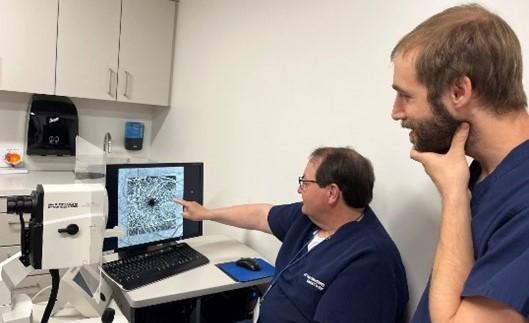Studying neurological disease through the lens of neuro-ophthalmology can give cellular-level detail into both structures and functions. Our research uses advanced analytics on rigorously collected and quality-controlled data, where we continue to build on an already large body of data. This work has spurred many collaborative projects studying multiple sclerosis, neuromyelitis optica spectrum disorder, Alzheimer's disease, and many more.

The ability to obtain near-cellular resolution through neuro-ophthalmological technologies has given tremendous insight into a number of neurological conditions, as the back of the eye is essentially the front of the brain. We leverage several technologies, such as optical coherence tomography, pupillometry, and oculography to better diagnose and treat several conditions, including optic neuritis, multiple sclerosis, neuromyelitis optica spectrum disorder, and myelin oligodendrocyte glycoprotein associated disease.
Clinical trials often pose as opportunities to be “the future of medicine, today.” We lead and work with others in a number of therapeutic clinical trials, both for disease modification, as well as symptom management. This includes compassionate use programs.
Early work in our laboratory studying multiple sclerosis pointed to a deficit in what are called intrinsically photosensitive retinal ganglion cells within the retina. These cells have a number of physiological roles, including regulating people’s internal clocks, or their circadian rhythms. We continue to examine the significance of this deficiency in people with multiple sclerosis and related disorders.